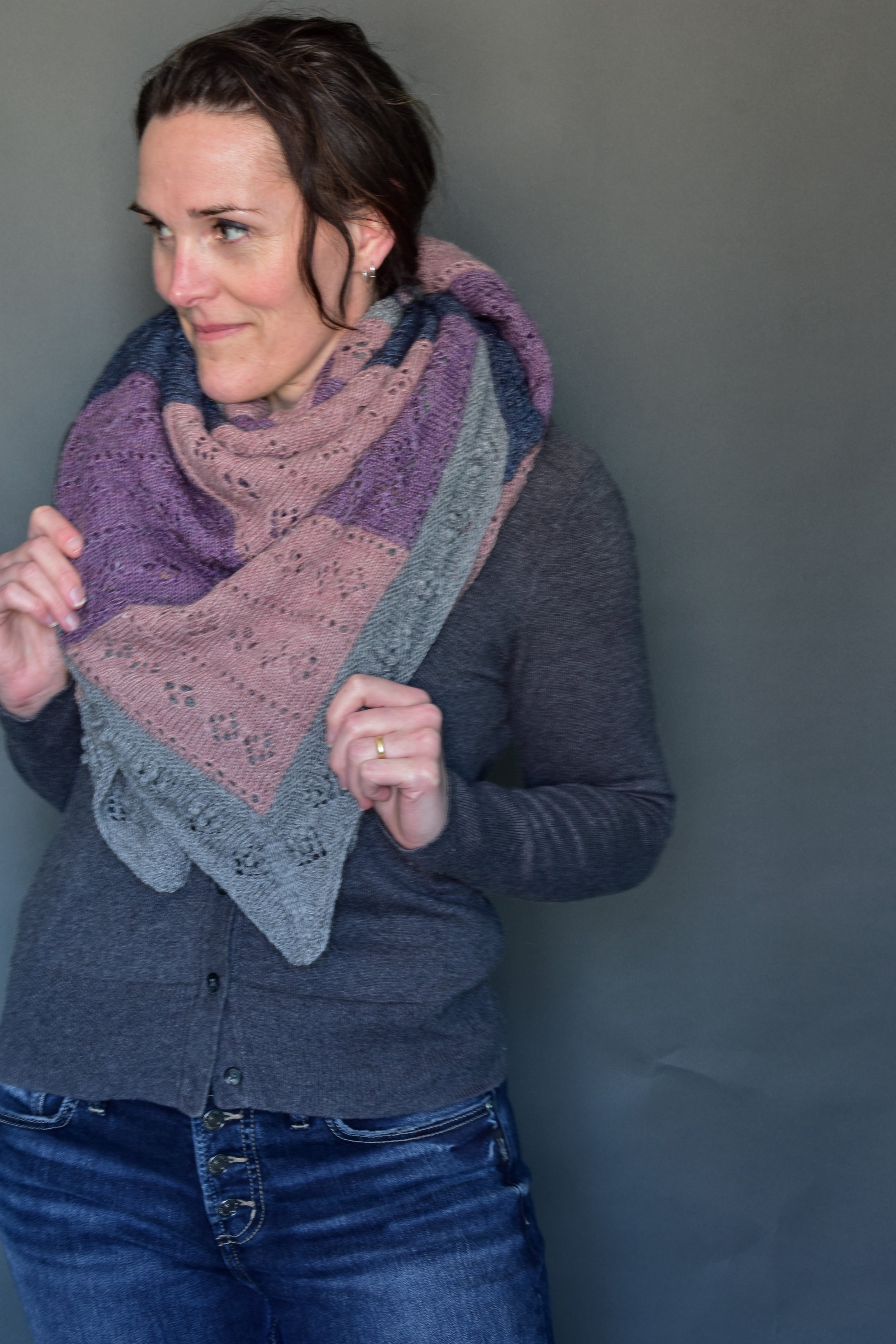File
A .zip file containing 2 PDF files:
1 PDF file of the English version of pattern and 1 PDF file of the French version of the pattern
Upon download, most operating platforms will open the .zip with a double click. Please message me if you need additional guidance on how to open the .zip file to access the PDFs.
Size
173.5 cm (68.25”) long X 69 cm (27.25”) deep
Yarn
ArtFil Chalet (50% Hemp / 50% Merino wool; 120 metres / 131 yards per 50 grams) in:
main colour (MC) Plage: 900 metres / 985 yards
contrast colour (CC1) Fôret: 35 metres / 40 yards
contrast colour (CC2) Déténté: 15 metres / 20 yards
contrast colour (CC3) Citrouille: 10 metres / 15 yards
contrast colour (CC4) Hibou: 10 metres / 15 yards
If using sample yarn, you will need 8 skeins of MC and 1 skeins of each CC1, CC2, CC3, CC4. Please alternate skeins of the MC as you work since this is hand-dyed yarn.
Gauge
Ribbing Stitch: 24 sts and 29 rows to 10cm / 4” with gauge-size needles after blocking.
Stranded Colourwork: 25 sts and 33 rows to 10cm / 4” with gauge-size needles after blocking.
Needles
Both gauges were achieved with a 4mm (US6) needle. Use a needle length of at least 100cm (32”) for the ribbing and colourwork. For the i-cord edging, I recommend using either two fixed circular needles of 100cm (32”) in length or use the cable connector to join two cables in your interchangeable need set.
Techniques
Stranded knitting in two colours
i-cord bind off
——————————————————————————————————
Version française:
Taille
173.5 cm (68.25”) de long X 69 cm (27.25”) de hauter
Laine utilisée
ArtFil Chalet (50% Chanvre / 50% laine Mérino wools ; 120 mètres / 131 yards par 50 grammes) :
couleur principale (CP) Plage : 900 mètres / 985 yards
couleur de contraste (CC1) Fôret : 35 mètres / 40 yards
couleur de contraste (CC2) Déténté : 15 mètres / 20 yards
couleur de contraste (CC3) Citrouille : 10 mètres / 15 yards
couleur de contraste (CC4) Hibou : 10 mètres / 15 yards
Si vous utilisez le fil recommandé, il faut 8 écheveaux de CP, et 1 écheveau de chaque contraste CC1, CC2, CC3, CC4. Pensez à alterner les rangs avec CP ; il s’agit d’un fil teint à la main et des différences peuvent apparaitre selon les écheveaux.
Echantillon
Côtes: 24 mailles par 29 rangs pour 10cm / 4” après blocage.
En motif de jacquard: 25 mailles par 33 rangs pour 10cm / 4” après blocage.
Aiguilles
Chaque échantillon est réalisé avec des aiguilles 4mm (US6). Il est recommandé d’utiliser une aiguille circulaire d’au moins 100 cm (32”) pour les côtes et le motif. Pour la bordure en i-cord, il est recommandé de prendre une deuxième aiguille de 100 cm (32’’), ou d’utiliser un connecteur afin de joindre 2 câbles interchangeables d’au moins 100 cm chacun.
Techniques
Jacquard à deux couleurs
Rabat I-cord
























































